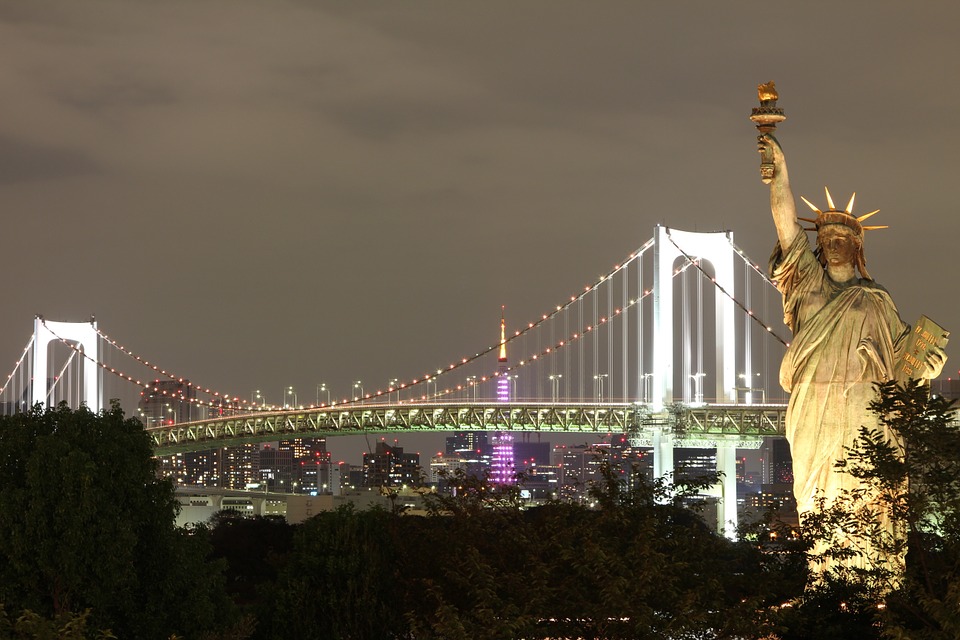The Habitat III conference in Quito, Ecuador this week is the most important meeting on cities and development in decades. It will shape the urban agenda of the 21st century.

New York is one of the cities threatened by climate change induced sea level rise. Photo: Pixabay
It is now well-known that the world is more urban than rural, with the challenges of 21st century urbanisation firmly on the agenda. In Quito, Ecuador’s capital, the contrasting opportunities and challenges of cities are fully on display – vibrant and exciting culture, choking pollution, snarling traffic, and prosperity and insecurity varying dramatically between neighborhoods. And it is in Quito this week that these and other challenges will be taken up by the international community at The United Nations Conference on Housing and Sustainable Urban Development, better known as Habitat III.
A once-every-20-year high-level urban forum, thousands of mayors, scholars, business people, media, and citizen-groups will meet to discuss the direction of cities in the 21st century. The last meeting in Istanbul in 1996 resulted in the Habitat Agenda, which helped move urban issues onto the international development agenda.
Despite significant progress, urban challenges are greater than ever before. Recognising the vital importance of cities, Habitat III’s draft outcome document reiterates that ‘as the population, economic activities, social and cultural interactions, as well as environmental and humanitarian impacts, are increasingly concentrated in cities, this poses massive sustainability challenges in terms of housing, infrastructure, basic services, food security, health, education, decent jobs, safety, and natural resources’. The adoption of this New Urban Agenda – in addition to the UNs recently established Sustainable Development Goal number 11 focusing on Sustainable Cities and Communities – will be a milestone in global action to improve human settlements.
Central to discussions in Quito will be how cities – both developed and developing – can respond to dynamics of increasing complexity, fragility and insecurity in the coming decades. While rapidly urbanizing cities in the Global South are often characterized by poor institutions, low economic opportunity, heightened insecurity, and extreme vulnerability to climate change, Western cities increasingly face these issues.
Examples of shared challenges are numerous. Urban overcrowding is a reality in both the West and the Global South, with housing markets stretched to capacity, and ever-emerging class divides. Global and local financial crises are also hitting municipalities hard, with underinvestment in critical services and infrastructure accelerating possibilities of urban decay from Dhaka to Detroit.
Energy security is also increasingly fragile, despite ever-increasing demand. There are growing concerns over shortages in cities in China, South Africa and the BRICs in general, while Britain’s energy security has been described as in disarray. Urban water crises from Los Angeles to Melbourne to São Paulo have stemmed from a mix of privatization, inadequate infrastructure and prolonged droughts; while Global cities like Singapore, London, Mumbai and New York face severe risks from climate change induced sea-level rise.
While often assumed Western and developing cities are generations apart in levels of development and social stability, the reality is that the complex challenges they face will make these cities increasingly similar. This offers opportunities for inter-urban learning, particularly as more and more cities and citizens are finding unique solutions to institutional and infrastructural challenges and urban fragility.
Business-citizen-government coalitions and architectural innovation have paved the way for Colombia’s ‘Medellin Miracle’ transforming the world’s most violent city into a model of 21st Century urbanism. Detroit’s urban crisis has birthed a citizen-led transformation of the city. And with only limited budgets, environmentally vulnerable towns in The Philippines are pioneering approaches to climate change resilience and disaster preparedness. In Quito, the Habitat Village will highlight similar efforts, showcasing innovative urban solutions from across the world.
As this century marches on, cities will increasingly be characterized by fragility. Urbanist Josef Konvitz warns of cities’ increasing vulnerability to severe crises in the coming decades, and calls for a paradigm shift to put cities at the centre of economic policy, governance and development. In doing this, it is essential to better understand how urban systems contend with vulnerability, complexity and crisis; how urban actors formally and informally respond in situations of breakdown or disrepair; and how positive and innovative solutions to crisis may emerge in such contexts.
With the urban agenda crystallising around Habitat III, there is an important opportunity to highlight novel solutions to complex problems. Yet with few exceptions, the awareness of urbanization as a megatrend has barely registered on the development policy radar. This must change. Policymakers and urban stakeholders both in the West and in the Global South need to more fully embrace urbanization as a central policy issue – both at home and abroad. International development actors should also recognize cities as integral to development, and orient policy portfolios towards supporting sustainable cities. Moreover even in places like the highly developed Nordic countries, it must also be acknowledged that manageable populations and high living standards do not make cities immune to the challenges of urbanization, and that concerted efforts are required to ensure livable, sustainable cities in the future.
Despite differing levels of development, many of the challenges posed by urbanization are universal. It is wise then to pay attention to how cities and citizens across the globe cope with urban challenges, promote dialogue and learning between cities to share knowledge, and support actions that ultimately work to deliver safe, sustainable cities.
- This text was published in Norwegian in Dagsavisen 18 October 2016: ‘Hvilken vei skal byene gå?’